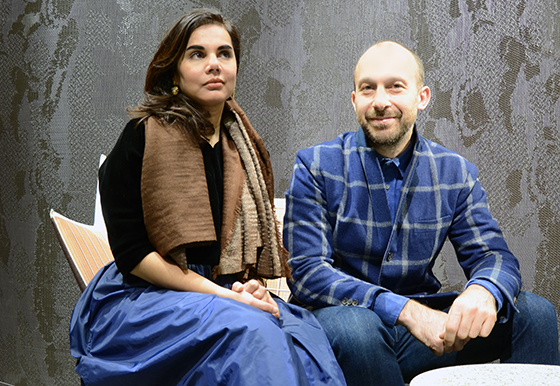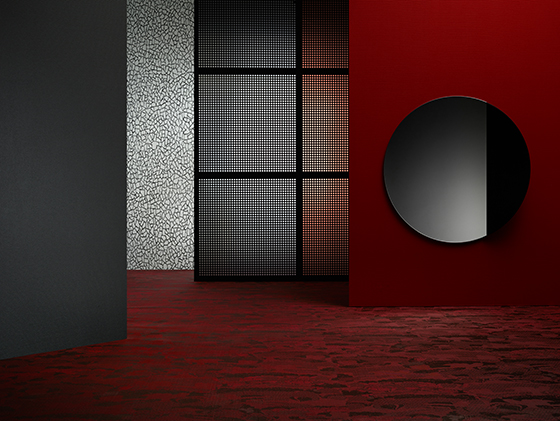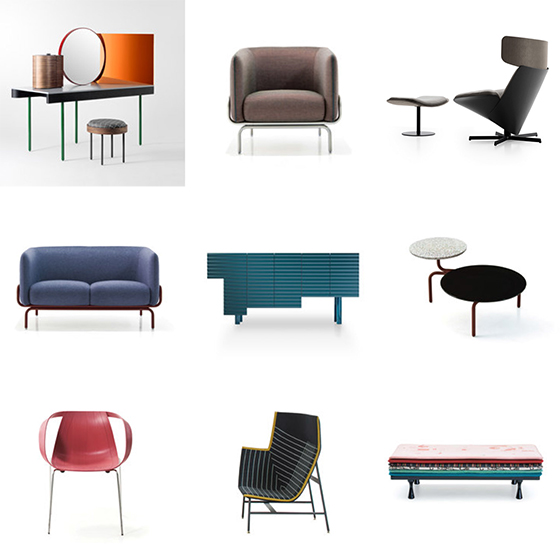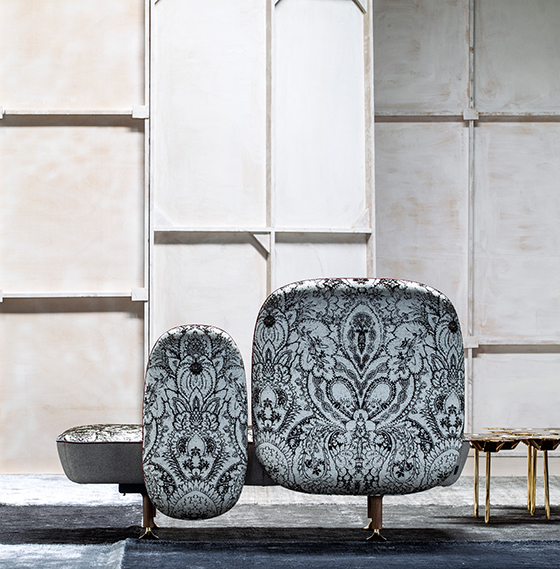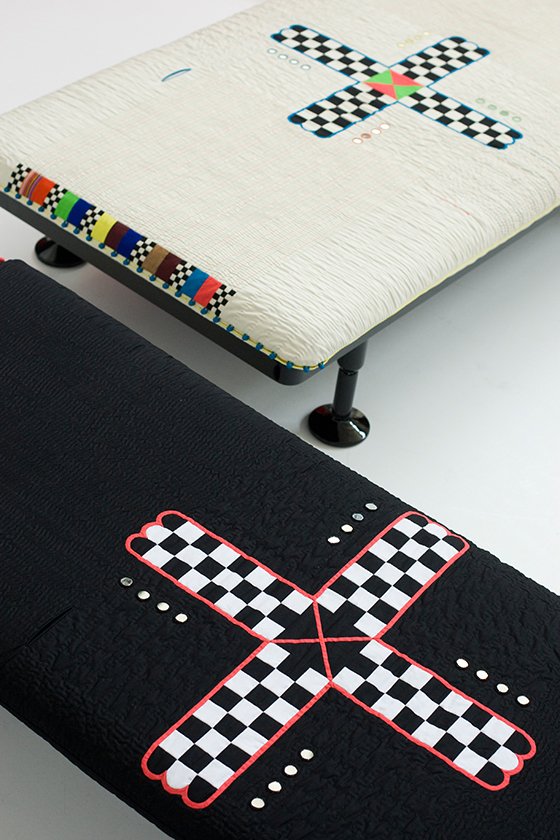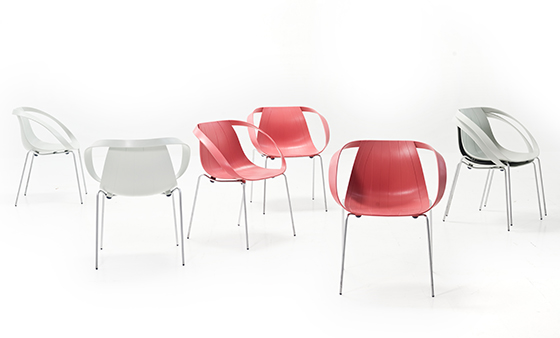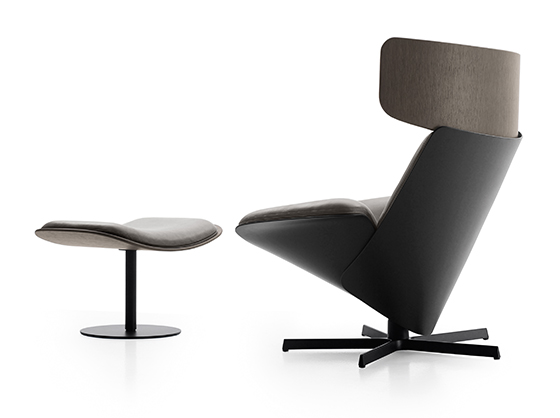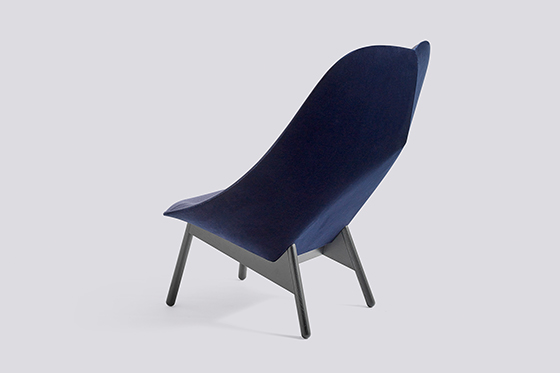Material Tendencies: Doshi Levien
Text by Anita Hackethal
Berlin, Germany
22.03.16
The work of London-based design practice Doshi Levien celebrate a hybrid of different worlds, bringing together cultural diversity and showing the interplay between industrial design and traditional craftsmanship.
Nipa Doshi and Jonathan Levien - Photo © Architonic / Anita Hackethal
Curious as ever to know about designers’ material choices, Architonic recently met up with Nipa Doshi and Jonathan Levien in Stockholm, where they presented 'Material Interventions' – a visual campaign for the new collection by Swedish flooring brand Bolon.
Nipa Doshi: We combined the vinyl flooring with other materials, such as marble, wood, stone, brass, terrazzo and concrete, in the same way architects work on their building projects. We wanted to open people’s eyes to what are the visual possibilities of a material, as it can be considered one of the most defining elements of a space. By using a certain material and colour, you can completely transform the identity of an architectural space.
Set up for new collection 'Bolon By You' for Bolon, 2016
Jonathan Levien: Bolon developed a system that enables designer to mix their own colour and patterns by choosing from six different designs in 48 colours. So there are around 290 possibilities when multiplying the warp direction with the weft direction. You can perceive it as a floor or as an architectural material.
Nipa: As a textile material, it has a lot of depth. I think that actually most architects and designers don’t really know how to use textiles, because in architecture it is normally the last aspect of a design process. It is more the domain of the interior designer. But now that most offices are becoming like hotels and homes, there are suddenly a lot of textiles in workspaces. Textiles are becoming a very important part of architecture now. They are used through blinds and curtains, to walls for sound absorption, rugs, upholstery fabrics and floorings.
What kind of textiles do you like?
Nipa: I definitely would say woven structures. I do like a certain metallic element in textiles, but that's me personally. I like interiors that show different textures and materials combined, like a very opaque textile with a very technical textile and maybe something earthy and then a hard material that emphasises the texture of the textiles.
Which material would you choose if you had to restrict yourselves to working with just one for the next three years?
Jonathan: I always find the combination of materials interesting. Mixing the properties of materials and bringing them together. I do use cardboard a lot in the studio, because it allows me a lot of creative freedom to express my ideas. It is extremely malleable. I cut it, dart it and turn this very humble, sort of characterless sheet of two-dimensional cardboard into a plastic, sculptural form. I wouldn't say it's a final material for a space, but it gives me a lot of possibilities within the design process. Great for prototyping.
Have you identified certain trends in materials?
Nipa: Yes there are some, unfortunately. I think trends don't work in this field, because design has to last for a very long time. For me it is more interesting to have a view on how a project will turn out, what is the impact of that material over a period of time. Does it have longevity? Is it something that you like even five years from now?
Jonathan: I think there has been definitely a trend towards the material being the protagonist in design recently, maybe the form taking a backseat to that. I have seen a lot of geometric compositions of materials – metals, marble, floss. Very substantial materials that have an authenticity. Some of that design is lacking depth. I feel that it is a lacking longevity, which also comes through form and a more sophisticated approach to using materials.
---
---
Look out for more Material Tendencies reports. We’ve captured insights from renowned designers and we’re delighted to be able to share them with you in the forthcoming weeks, as part of our ongoing Architonic Trend Analysis series.
